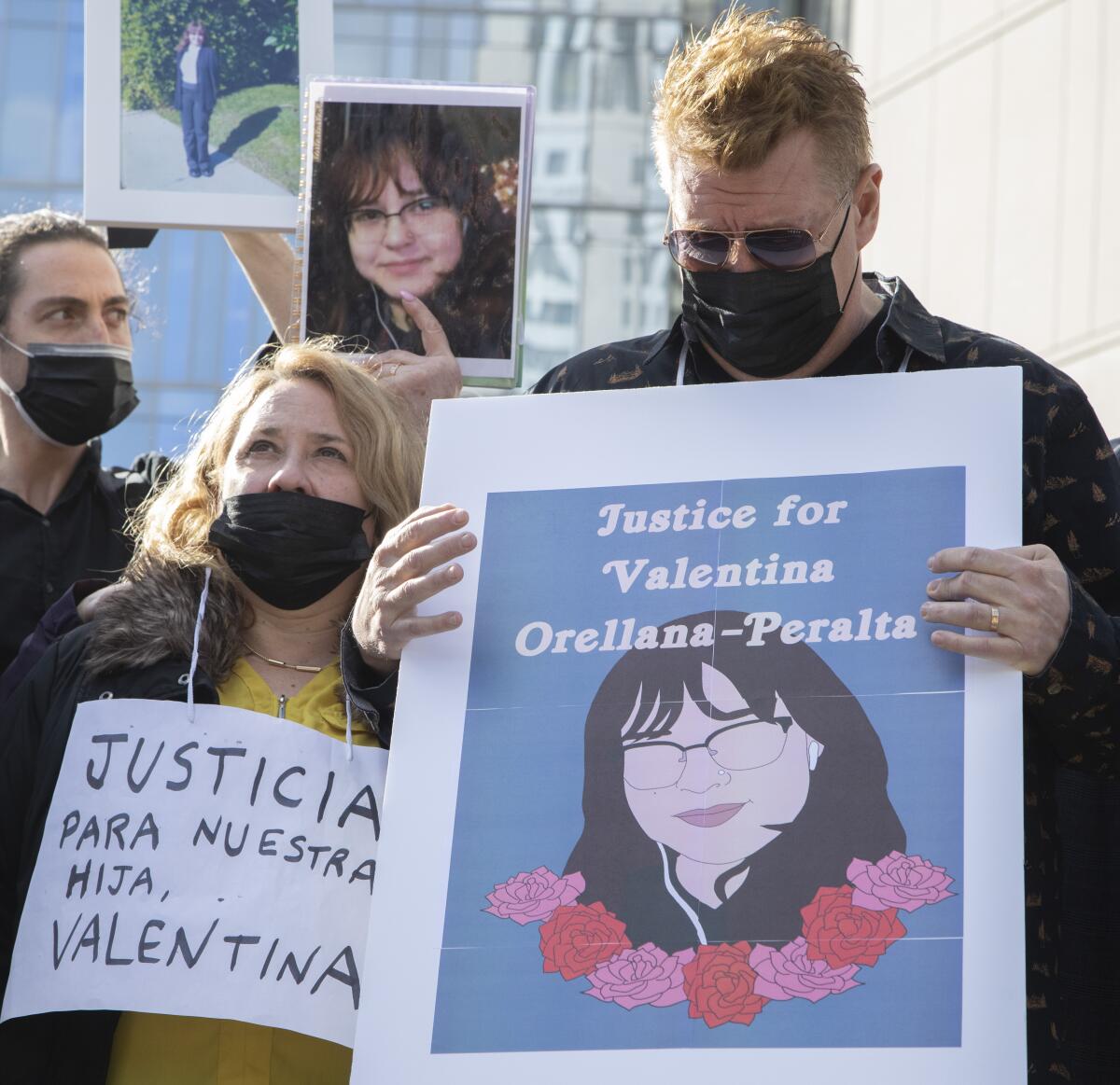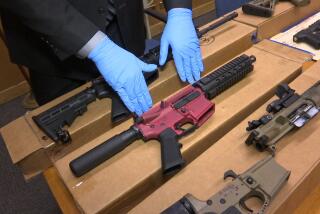Op-Ed: The link between underregulated firearms and an LAPD bullet killing a teen in a fitting room

The split-second decisions of LAPD officers that led to the shooting deaths of an assault suspect, and a 14-year-old girl in a dressing room at a Burlington store in North Hollywood, were decades in the making. Their deaths are the bloody price of prioritizing policing over legislation to fight a gun violence epidemic unparalleled in the developed world.
On Dec. 23, LAPD officers responded to reports of a man attacking customers in the store. Some calls to 911 incorrectly reported the suspect had a gun. One of the responding officers opened fire with a rifle, killing the suspect, Daniel Elena-Lopez, 24. One shot pierced the wall of a dressing room and killed Valentina Orellana-Peralta. The teen had been shopping with her mother.
The weaponry and tactics deployed in the Burlington store by the LAPD are the consequence of a government unable and unwilling to regulate an enormous supply of firearms: A 2018 study estimated there are more than 393 million firearms in civilian hands in the U.S., and many millions more are purchased each year. More than 14,000 people were killed by someone using a firearm in 2020.
In lieu of firearm regulation, police have become the default stopgap to address our deadly gun violence problem.
This approach can be traced to Feb. 28, 1997, and a bank robbery in North Hollywood three blocks from where Valentina would die in her mother’s arms. That day, two bank robbers armed with automatic and semi-automatic rifles outgunned the LAPD in a 44-minute firefight. Equipped with only pistols and shotguns, the hopelessly outmatched officers commandeered high-powered weapons and ammo from a nearby gun shop. More than 2,000 rounds of ammunition were fired. One robber was killed, the other took his own life, and multiple officers and civilians were injured.
The North Hollywood bank robbery was immediately used as justification for arming patrol officers with high-powered rifles. Compared with police-issued pistols or shotguns, so-called patrol rifles fire high-velocity rounds that are more lethal and able to penetrate armor at long range. Instead of forcing a national reckoning over lax gun laws and easy access to weapons like those used by the North Hollywood robbers, rifles once reserved for high-risk Special Weapons and Tactics units have been approved for use in 80% of police departments.
The massacre at Columbine High School in 1999 solidified a preference for police over needed firearm regulation. The Columbine shooters acquired their weapons through a friend who purchased firearms at a gun show without undergoing a background check. Attempts to close this gun show loophole repeatedly failed at the federal level, including after 20 first-graders were massacred at Sandy Hook Elementary School in 2012.
Since Sandy Hook, more than 2,600 mass shootings have resulted in at least 2,900 people being killed and 11,000 wounded, according to 2020 analysis. In lieu of legislation, police operations were further tailored to the growing inevitably of mass shootings.
Bolstered by 9/11-fueled fears of terrorism — and a Department of Defense program that funneled military equipment to local police departments — post-Columbine police widely adopted the weapons and tactics used Dec. 23 in North Hollywood.
Instead of waiting for a SWAT team to address an in-progress shooting, today’s police are trained to have the first officers on scene locate and neutralize the threat as quickly as possible. Modern police forces, many equipped with rifles, operate under the assumption that seconds are the difference between life and death. When these tactics combine with imperfect or incorrect information, catastrophic mistakes like those made at the Burlington store are bound to occur.
This trend in weaponry and tactics is a reflection of what I call the “danger imperative,” policing’s cultural preoccupation with violence, death, and the sanctity of officer safety. After spending more than 1,000 hours with officers across three police departments, I found that the danger imperative shapes all facets of policing, from academy training to how officers understand and use force. To survive, officers learn they must be ready to immediately and decisively address violence — especially gun violence — that may strike at any moment. Hesitation can be fatal.
The combination of training, tactics and culture that sets up police as the first and last answer to gun violence has predictable costs. Even if officers are legally and morally justified when they shoot, their use of deadly force is woefully inaccurate. Less than a third of the 263 rounds fired by LAPD officers in 2019 hit their intended target. In 19% of LAPD’s intentional, on-duty firearm discharges, officers missed every shot. Though national estimates are unavailable, officers’ inaccurate gunfire injures and kills civilians and fellow officers in police departments across the country.
Recent trends provide little reason for optimism. Nationally, homicides driven by gun violence increased in 2020 by 30%, and two-thirds of the country’s most populous cities saw a continued increase in 2021. Some states, including Texas and Utah, have loosened gun laws to allow permitless carry, and gun sales have surged to all-time highs. The proliferation of untraceable “ghost guns” is also raising concerns among police. Since 2017, the LAPD’s seizure of ghost guns has increased by 400%.
As usual, many elected officials have defaulted to investment in policing, proposing and passing increased police budgets that neither address the root causes of gun violence nor the collateral damage of armed police responses.
Rather than address the socioeconomic drivers of violence or enact essential firearm regulations, legislators continue to place gun rights and the profits of gun manufacturers above the lives of police and the public. As long as they persist with this political death pact, police killings like that of Valentina and Elena-Lopez, and too many others, will continue.
Michael Sierra-Arévalo is an assistant professor of sociology at the University of Texas at Austin. He is working on his first book, “The Danger Imperative: Violence, Death, and the Soul of U.S. Policing.”
More to Read
A cure for the common opinion
Get thought-provoking perspectives with our weekly newsletter.
You may occasionally receive promotional content from the Los Angeles Times.










